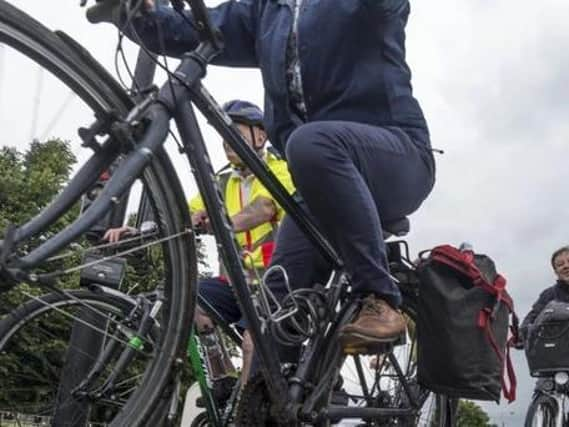Calls for improvement to cycling infrastructure to cut road deaths


With official government data showing over 17,000 cyclists were injured or killed on the UK’s roads last year, a leading charity says safety is a key barrier to more people making the switch to cycling.
In Calderdale in 2019 there were 29 cycling casualties, resulting in 18 slight injuries, 10 serious injuries, and one death.
Advertisement
Hide AdAdvertisement
Hide AdThe figure amounts to 14 casualties per 100,000 people and is down 28 per cent from 2016.
In the Harrogate district in 2019 there were 42 cycling casualties, resulting in 22 slight injuries, and 20 serious injuries.
The figure amounts to 26 casualties per 100,000 people and is down 26 per cent from 2016.
In Kirklees in 2019 there were 62 cycling casualities, resulting in 45, and 17 serious injuries.
Advertisement
Hide AdAdvertisement
Hide AdThe figure amounts to 14 casualties per 100,000 and is down 21 per cent from 2016.
In the Scarborough district in 2019 there were 10 cycling casualties resulting in 10 slight injuries.
The figures amounts to nine casualties per 100,000 people and is an 89 per cent increase on 2016.
In the Wakefield district in 2019 there were 62 cycling casualties, resulting in 48 slight injuries, 13 serious injuries and one death.
Advertisement
Hide AdAdvertisement
Hide AdThe figure amounts to 18 casualties per 100,000 people and is down 17 per cent from 2016.
Figures from the Department for Transport (DfT) and Police Service of Northern Ireland (PSNI) analysed by the JPIMedia Data Unit reveal 410 cyclists have been killed in the UK since 2016.
While the overall number of casualties has fallen every year since 2016, the number seriously injured has increased by 9 per cent.
Last year 102 cyclists lost their lives, nearly 4,000 were seriously injured and over 3,000 were slightly injured.
Advertisement
Hide AdAdvertisement
Hide AdOnly incidents reported to police are included, while figures prior to 2016 cannot be compared as many police forces changed their definition of a serious injury.
The average age of casualty was 36 last year, with the vast majority of victims being men.
Daisy Narayanan, director of urbanism at walking and cycling charity Sustrans, said safety is a key barrier to more people taking up cycling.
“While cycling is a relatively safe activity, we need to continue to make our streets safer for people who cycle and to increase people’s perception of safety,” Ms Narayanan said:
Advertisement
Hide AdAdvertisement
Hide Ad“In order to ensure cycling safety across the board, we need strong leadership in walking and cycling at the local level.
“Local authorities should work to create safer, better streets and places through the implementation of protected cycle routes and low traffic neighbourhoods, whilst taking into account the local context.”
The UK Government said it is investing billions to make cycling safer.
A spokesperson said: “We’re investing an unprecedented £2 billion to support cycling and walking over the next five years, including for safe, high-quality infrastructure, and proposing changes to The Highway Code to further protect cyclists, pedestrians and horse riders.”